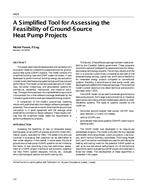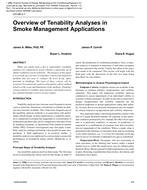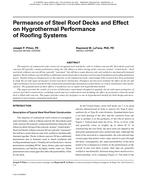Continuous building pressure monitoring was conducted for two weeks to a year at 16 commercial and institutional (C&I)buildings in Minnesota (Climate Zone 6). Building automation system trend data and occupancy schedules were used to identifyHVAC operation modes. The measurements were used to evaluate the impact of HVAC system operation on building pressures.The building pressures and pressure changes from HVAC operation were compared to the typical design level of 0.05 in. wc (12.5Pa). Only one building consistently had an average ground level pressure above the design level, while the median across buildingsranged from 0.016 in. wc (4 Pa) for warm weather and –0.04 in. wc (–10 Pa) for the coldest conditions. Only 10% of the dataperiods had an average ground level pressure during HVAC operation that was greater than the design level and just 24% hadan average greater than half the design level. Excluding two buildings, HVAC operation had a positive pressurization effect.However, for all of the data periods the median pressure increase was 0.02 in. wc (5.0 Pa), the pressurization effect was abovedesign for only 15% of the periods, and above half of design for just 40% of the periods. This suggests that most buildings wouldhave significant ground level air infiltration most of the year and greater HVAC pressurization would reduce air infiltration inthose buildings. CONTAMW models were used for six of the buildings to determine the effect of HVAC operation on building airinfiltration rates. For four of the buildings, HVAC operation decreased modeled infiltration rates by 433 to 2210 cfm (12,300 to62,600 L/m) and for two it increased infiltration by 261 and 484 cfm (7390 to 13,700 L/m).
Citation: Thermal Performance of Exterior Envelopes of Whole Buildings XIII, Conference Papers
Product Details
- Published:
- 2016
- Number of Pages:
- 9
- Units of Measure:
- Dual
- File Size:
- 1 file , 2.2 MB
- Product Code(s):
- D-BldgConf16-26


